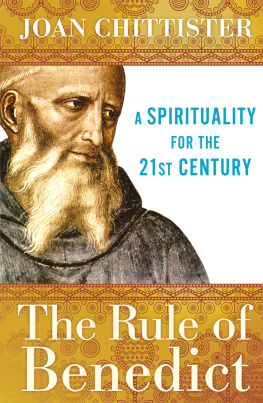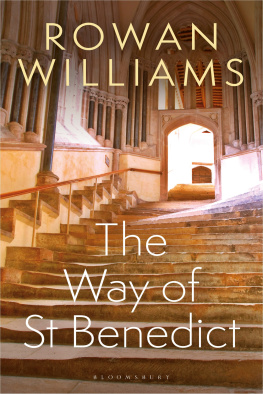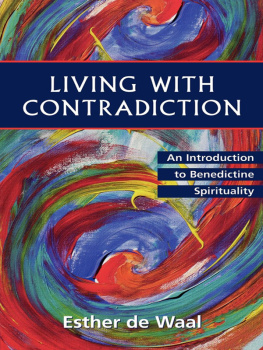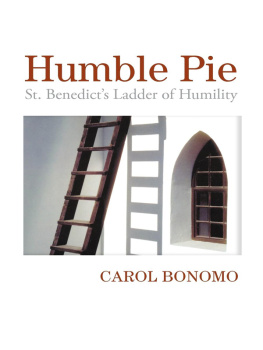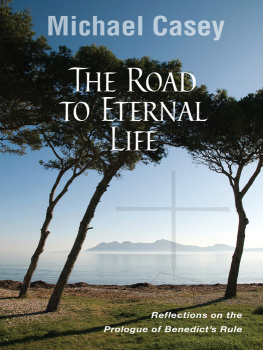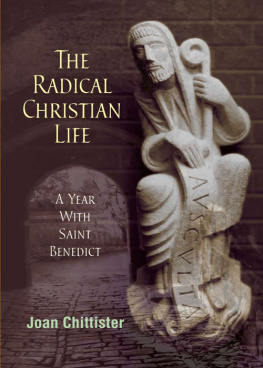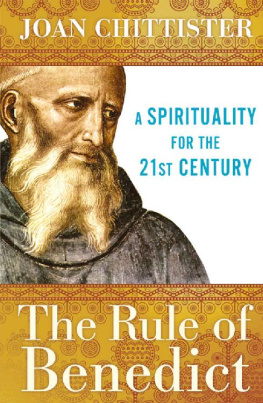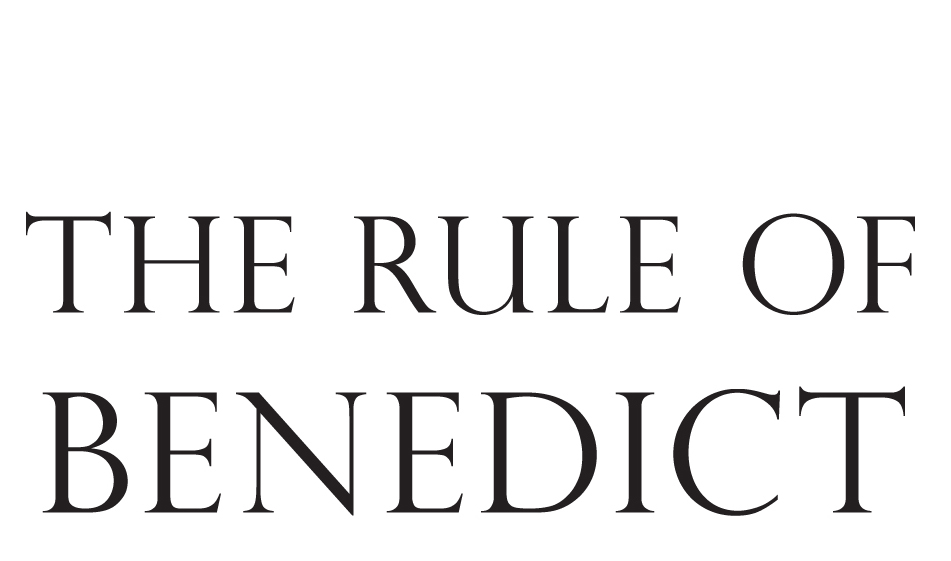
The Crossroad Publishing Company and Jade Music are proud to present:
THE RULE OF BENEDICT
A Spirituality for the 21st Century
Joan Chittister, O.S.B.
A classic text with commentary, images, and sound.
To download the selection of accompanying Gregorian chants, please go to: www.milanrecords.com/crossroadruleofbenedict
The Crossroad Publishing Company offers a 200-year global family tradition of publishing on spiritual living and religious thought. Offering books by authoritative and award-winning authors, our catalog includes original editions, monographs, commentary, reflections, prayers, guides, and spiritual fiction. We promote reading as a time-tested discipline for focus and enlightenment. We help authors shape, clarify, write, and effectively promote their ideas. We conceive, create, and distribute books. Our expertise and passion is to provide healthy spiritual nourishment in written form.
Jade Music, the specialty division of Milan Records, has a proven dedication to releasing quality classical and spiritual music for more than 20 years. It established itself as the premiere record label of the Abbey of Santo Domingo de Silos, Spain. Jade Musics catalog includes works by world-renowned choirs of Saint-Wandrille, Notre-Dame de Ganagobie, and Saint-Madeleine du Barroux, among others. In 2007, the record label distinguished itself by releasing the soundtrack to the highly acclaimed documentary film Into Great Silence by Philip Grning. More recently, Jade Music released two Gregorian chant albums by the Norbertine Fathers of Orange County, California.
For this edition, numerous people have shared their talents and ideas, and we gratefully acknowledge Sr. Chittister and the Benedictine Sisters of Erie, Pennsylvania who have been most gracious during the course of our cooperation. We thank especially:
John Farina, initial idea and acquisition of this book
George Foster, cover design
Eve Vaterlaus, layout and image composition
Scribe, Inc., copyediting, proofreading, and file management
Versa Press, Inc., book production
Concept and idea for this edition, art research and acquisition, and project management by The Crossroad Publishing Company.

This printing: December 2016
The Crossroad Publishing Company
www.CrossroadPublishing.com
Copyright 1992, 2010 by Joan Chittister
All rights reserved. No part of this book may be reproduced, stored in a retrieval system, or transmitted, in any form or by any means, electronic, mechanical, photocopying, recording, or otherwise, without the written permission of The Crossroad Publishing Company.
The compilation and composition of the artwork and music accompanying The Rule of Benedict is an original work owned by The Crossroad Publishing Company, and may not in any way be copied, used with other texts or excerpted.
The stylized crossed letter C logo is a registered trademark of The Crossroad Publishing Company.
In continuation of our 200-year tradition of independent publishing, The Crossroad Publishing Company proudly offers a variety of books with strong, original voices and diverse perspectives. The viewpoints expressed in our books are not necessarily those of The Crossroad Publishing Company, any of its imprints, or of its employees. No claims are made or responsibility assumed for any health or other benefit.
Originally published in 1992 in slightly different form and without art and music.
Library of Congress Cataloging-in-Publication Data
Chittister, Joan.
The rule of Benedict : insights for the ages / Joan D. Chittister.
p. cm.
Includes bibliographical references and index.
ISBN 978-0-8245-2594-1 (alk. paper)
1. Benedict, Saint, Abbot of Monte Cassino. Regula. 2. Monasticism and religious ordersRules. I. Title.
BX3004.Z5C35 2010
255.106dc2
2010019403
Printed in The United States of America
Books published by The Crossroad Publishing Company may be purchased at special quantity discount rates for classes and institutional use. For information, please e-mail .
CONTENTS
This book is dedicated to all the past prioresses of my own community, who interpreted the Rule for us in every age of the communitys history, to Sister Phyllis Schleicher, the prioress of the community, whose insight and insistence make this work possible now, and in particular to those prioresses who made the Rule real and holy to me in the various periods of my own life:

 Sister Sylvester Groner, O.S.B., 19461958
Sister Sylvester Groner, O.S.B., 19461958

 Sister Alice Schierberl, O.S.B., 19581964
Sister Alice Schierberl, O.S.B., 19581964

 Sister Mary Margaret Kraus, O.S.B., 19641978
Sister Mary Margaret Kraus, O.S.B., 19641978

The Rule of Benedict is a spiritual guide, rare by virtue of its ancient origins, valued for its continuing meaningfulness in every century since. It has weathered every period of Western history since the fall of the Roman Empire and been a dynamic source of light and energy to each. Surely someone ought to ask, How is it that anything can last that long and still be considered viable in ages so distant from its own? Someone ought to care why it is that this way of life has been found to be both holy and helpful, whatever the social changes of the era, whatever the pitfalls of the time. Someone ought to wonder, then, in what directions, if any, would this Rule point our own lives in a period in which every system in the Western worldgovernment, economics, family, social values, and human relationshipsis once again in flux?
On the one hand, this is a book about a document and a lifestyle that is over 1,500 years old but which in every era becomes increasingly more important as we fumble and stumble our way toward fullness of life in a world whose foundations are shaking.
On the other hand, this is also a book being written for a culture whose mantra is progress and whose character is change. We do not, as a people, often set out to preserve our past as have cultures before us.
Generations and cultures before us, for instance, made walls, houses, carriages and furniture to defy time forever. We have become a throwaway society. Everything our world creates, geared to maintaining a manufacturing economy, is timed to become useless: the tires on our cars, the heating elements in our microwaves, the motherboards in our televisions and phones and computers and MP3 players that connect us to the world around us. They all wear out on schedule; they are all made to run down in time for us to buy the next version of them. However much any of them cost, they live measured lives. They are built to be thrown away long before the equipment they power has outlived its usefulness.
We have, in fact, become a culture that conditions people to wait for whats coming next. So we go through life, tiring easily both of what was and what is, living in expectation of what is to come. We think of what went before us as old fashioned.
Next page
